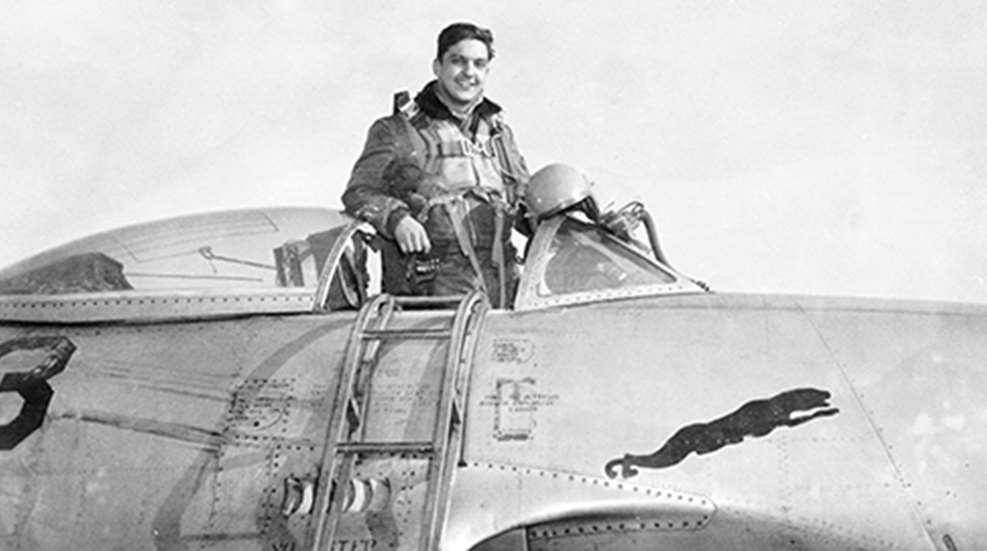
On my first solo flight at K-13, Suwan, Korea, in June 1952, I took off in an F-80 Shooting Star. It was not a combat mission. All I had to do was go up and have fun boring holes in the sky for about an hour and a half.
Immediately after takeoff, I felt the left wing was heavy and determined that the left tip fuel tank was not feeding properly, or at all. Afraid it might fall off and rupture during landing, potentially melting asphalt on the runway, the tower would not let me land with the full tank. I was instructed to make a bomb run and drop the whole tank.
Arriving at the bomb range, I set up my bomb-release switches to release the tank. Flying over the impact area I pushed the button, but nothing happened. I tried a second time and again there was no response. On my next pass, I tried the manual release handle but to no avail. Making one final run, I used the button we called the “panic button” because it allegedly released everything hanging on the airplane. It worked as advertised and dumped everything, save my errant left tip tank.
The tower control officer advised me that if I couldn’t get rid of the tank or its contents, I should give them my location, eject and await pick up. Well, pilots really hate to punch out of a perfectly flyable airplane, and I figured I still had one option worth trying.
The canopy of an F-80 can be opened in flight up to about 220 m.p.h. So, I opened the canopy and unholstered my G.I.-issue Colt M1911. Now, liquid fuel will not burn, at least not like vapors, so I aimed for the part of the tank I was sure would be full of liquid. Firing my first shot I had no idea where the bullet went-perhaps airborne, high-speed physics were at work, or maybe just my nerves. But my next three shots punctured the tank, passed through the fuel, and exited cleanly out the far side of the 24-inch-wide tank.
For the next 30 minutes, I flew with the left wing down in a series of circles to drain the fuel and slowly return to base. By the time I got to the airstrip the tank was empty, and I made a routine landing. As far as I know, I am the only pilot in the Air Force who ever shot his own plane to correct a malfunction.
Thank goodness for my .45.
This article appeared in the November 2012 issue of American Rifleman, sent in by Lt. Col. A.J. D’Amario, USAF. Ret., Florida





































